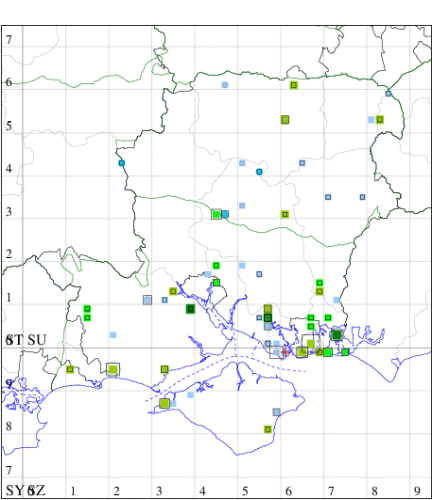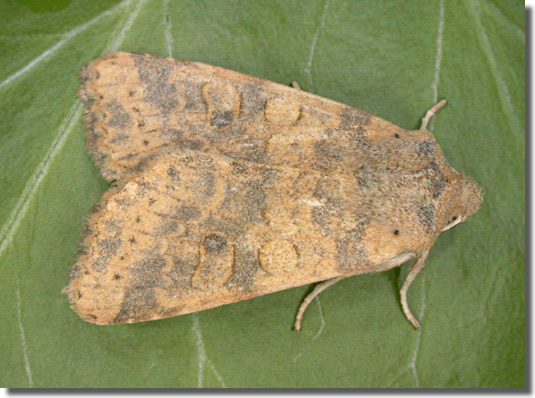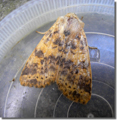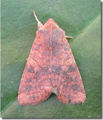Dusky-lemon Sallow
Cirrhia gilvago
Checklist Number73.183 [B&F: 2275]
Verification
Record will normally be accepted but photo evidence may be required - check with CMR if not sure of identity
Local in broad-leaved woodland, hedgerows and parks throughout much of England, northwards to central Scotland, a species of conservation concern under the UK Biodiversity Action Plan. In Hampshire and on the Isle of Wight in the past, scattered small colonies of this species occurred amongst Wych Elm, but as this tree is all but extinct in the county, the moth has gone the same way. Nowadays individuals turn up annually, but are assumed to be wanderers from the continent. Wingspan 34-40 mm. Forewing with termen more rounded than in others of the genus (MBGBI Vol 10). Larva feeds on buds, leaves and seeds of Wych Elm, over-wintering as an egg.


The abundance in each month is indicated as follows:
 No records
No records Very occasional
Very occasional Irregular
Irregular Uncommon
Uncommon Off-peak, but not unusual
Off-peak, but not unusual Off-peak, but not unusual
Off-peak, but not unusual Main flight time
Main flight time| J | F | M | A | M | J | J | A | S | O | N | D | |
|---|---|---|---|---|---|---|---|---|---|---|---|---|
| Adult |  |  |  |  |  |  |  |  |  |  |  |  |
| Larval |  |  |  |  |  |  |  |  |  |  |  |  |





